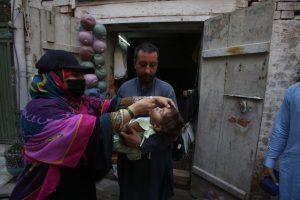Bedford, Mass., Nov. 29, 2022 (GLOBE NEWSWIRE) — Expanding on its portfolio of innovative nutritional products through biotechnology, Conagen, announced the development of its 99% high–purity sulforaphane. Made by a proprietary bioconversion technology, the company plans to begin the commercialization path in 2023. Conagen's bioconversion methods enable the production of sustainable products from many naturally occurring compounds regardless of rarity or small quantities occurring in nature.
"As a supplement product, Conagen's high–purity sulforaphane is appealing to consumers as the levels found in raw vegetables are too low to realize many of its promising health benefits," said Casey Lippmeier, Ph.D., senior vice president of innovation. "We're looking forward to expanding the nutritional market by commercializing sulforaphane in 2023."
Sulforaphane has been associated with supporting health benefits against cancer, diabetes, digestion, and heart disease and promoting cognition. With biotechnology and biomanufacturing advancements, much like Conagen's bioconversion technology, more nutritional offerings are produced at a high–quality and global scale.
Sulforaphane is found in cruciferous vegetables such as arugula, bok choy, broccoli, Brussels sprouts, cabbage, kale, radish, and more. In these vegetables, the inactive form of glucoraphanin belongs to the glucosinolate family of plant compounds. The sulfur–rich sulforaphane is activated only when vegetables are chewed or chopped to release myrosinase, a class of enzymes that play a role in the defense response of plants.
"Through Conagen's bioconversion technology, we're uncovering the great potential in sulforaphane as a powerful active health ingredient for consumers who are personalizing nutrition to support health functions," said Lippmeier. "We can make safe and high–quality nutritional ingredients from natural sources and offer it at a global–scale cost–competitively so that brands may pass on the good health and savings to their consumers."
Conagen's sulforaphane is ideal for non–GMO supplement solutions to formulate products with a sustainable and natural consumer appeal. More research is emerging for understanding the optimistic effects on multiple health functions. As one example of many, biotechnology and biomanufacturing will continue to harness the power of biology and nature to develop and deliver solutions for better nutrition, health, and wellness. Conagen is expanding its sustainable, nutritional products portfolio to better humankind and the planet.
###
About Conagen
Conagen is making the impossible possible. Our scientists and engineers use modern synthetic biology tools to program micro–organisms and enzymes on a molecular level to produce high–quality, sustainable, natural products manufactured worldwide via precision fermentation and bioconversion. We focus on the bioproduction of high–value ingredients for food, nutrition, flavors and fragrances, pharmaceuticals, and renewable materials.
Attachments
- Sulforaphane is found in cruciferous vegetables
- Sulforaphane has been associated with supporting health benefits.

GLOBENEWSWIRE (Distribution ID 8705501)




